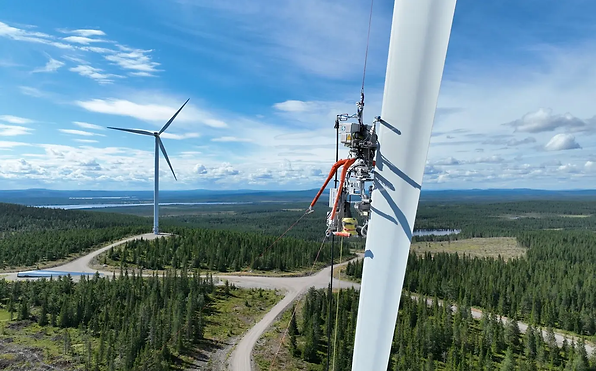
Planetary Pulse

Robotics in Environmental Protection
As environmental challenges only continue to intensify, with pollution, biodiversity loss, and extreme weather events, all accelerating in recent decades, robotics has been a widely used and powerful too to help monitor, clean, and protect natural ecosystems and our environment. These robots specialize in performing complex tasks in environments which are difficult or impossible for humans to reach safely, emphasizing their potential for environmental conservation in assisting humans in monitoring environmental changes and identifying urgent issues.
1. Cleaning Up Ocean Pollution

As plastic waste becomes a worldwide problem, with nearly 200 million tons of plastic in our oceans today, one important area where robots have been deployed is cleaning the plastic up from our oceans. Currently, 11 million metric tons of plastic enter the ocean every year, the equivalent of a full garbage truck dumping plastic into the sea every minute. Once in the ocean, the effects of these plastics cascade throughout the entire ecosystem. Not only do fish and turtles ingest or become entangled in the plastic, mistaking it for food, but plastics may also carry harmful chemicals which can bleed into the plants and animals of a marine environment. Microplastics, which enter fish when eaten, may come back all the way through the food chain to affect humans. Robotics is revolutionizing ocean cleanup, as they are able to sustain consistent and effective ocean cleanup compared to manned missions and operations. Autonomous surface robots act essentially like a waterborne vacuum cleaner, running on electricity rather than fossil fuels. These robots can collect up to 350 pounds of trash per trip, and can fit under tight harbors or near fragile habitats without causing damage. Other robots help to assist in these operations through monitoring where plastic accumulates. Special underwater drones help to map out where debris accumulates, helping to develop targeted water removal missions. Finally, the data that these robots collect can also help scientists and humans understand seasonal pollution patterns and hotspots, helping to improve prevention strategies.

2. Restoring Ecosystems
Healthy ecosystems are not only crucial to maintaining biodiversity, but they are also major players in climate stability. Forests and wetlands store vast amounts of carbon, coral reefs and mangroves protect coasts from storms and erosion, and biodiverse ecosystems overall help to support food security and medicine in many places around the world. However, despite their importance, about one third of the world's forests and half of the world's coral reefs have been lost since just the 1950s. Because traditional reforestation can be slow, costly, and limited by geography, robotics has the potential to greatly improve the scalability of restoring ecosystems. One thing that robots have helped with in terms of the health of coral reefs is surveying reef health, mapping coral bleaching and damage faster and more accurately than divers. Moreover, these robots can work in conjunction in swarms, especially for reforestation. After wildfires or deforestation, replanting the forests can prove to be a difficult task for humans due to the remote location of forests and the vast amount of trees that need to be planted. However, drones which carry seeds and are programmed to avoid these obstacles can dramatically improve speed and reduce costs. Finally, robots can also conduct long-term monitoring to keep track of vegetation growth, soil health, and biodiversity, helping scientists and people understand the best reforestation techniques and if further intervention is necessary.
3. Supporting Renewable Energy

As carbon emissions will continue to replace fossil fuels across the world, energy sources such as solar, wind, and hydropower are growing rapidly. However, beyond building them, maintaining them and keeping them efficient, reliable, and cost-effective over their long life spans is equally as important. Robotics has become an essential part of this maintenance, keeping renewable energy systems safer and more sustainable. For example, solar panels, damaged wind blades, or underwater algae on hydro turbines can reduce energy output significantly. Additionally, solar panels and wind turbines often require humans and robots to climb high or travel through remote areas, and operators often desire to keep costs as low as possible. Primarily, robots can inspect and maintain wind turbines, as autonomous drones can now scan turbine blades, capturing high-resolution images and thermal image data to detect cracks, erosion, or lightning damage. Some robots may also crawl along the fan blades for close-up inspection and repairs. Moreover, robots may also help to keep solar panels clean. Dust falling over a solar panel may reduce its efficiency by as much as 30%, but cleaning solar farms require extensive water, labor, and time. Thus, autonomous robots have been deployed to clean these solar panels even without water, operating around the clock to maximize energy production.